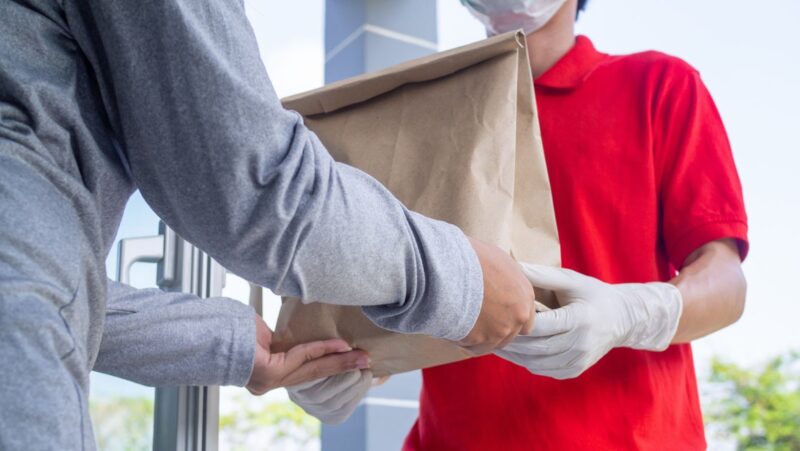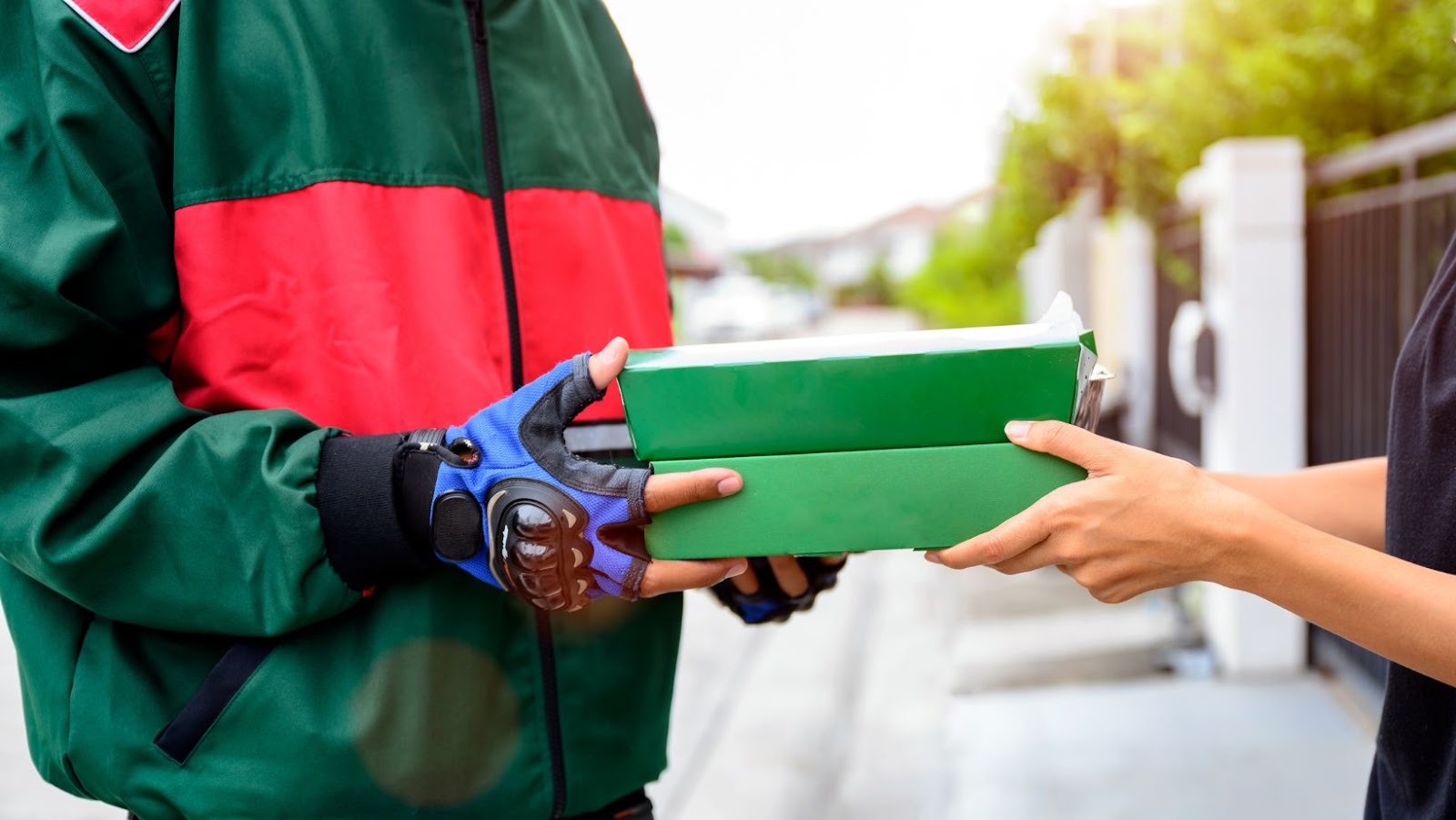The food delivery industry has been on a rapid rise in recent years and is expected to continue its surge in the coming years. With companies like Delivery Hero getting more time to sell its Asian business, Yogiyo, until January, this is a great sign for the industry.
This article will explore the food delivery industry’s current state and the implications the extended deal between Delivery Hero and Yogiyo may have on it.
Delivery Hero gets 5 more months to sell Yogiyo until January
The food delivery industry is a vibrant, dynamic and constantly changing sector that has seen a dramatic rise in activity in recent years. The industry has become increasingly competitive as technological advancements unlock new possibilities for delivery models, such as on-demand services, last-mile logistics and autonomous vehicles.
The market is estimated to be worth more than $90 billion and is projected to grow at an average rate of 12 percent between 2020 and 2025. This growth can be attributed to the growing Millennial demographic which values convenience over traditional approaches like shopping at brick-and-mortar outlets. Furthermore, the rise in ecommerce has supported greater adoption of online food delivery services. In contrast, investment in food technology start-ups has resulted in innovative applications helping deliver food faster than ever.
Technological advancements have also enabled more advanced segmentation of customers so that service providers can target the right customers with tailored services according to their particular needs and budget. Delivery companies increasingly use Big Data algorithms and artificial intelligence (AI) to predict customer behavior, maximize operational efficiency and enhance customer experience.
In addition to innovative delivery models, blockchain technologies are rapidly gaining traction throughout the food industry as they help digitize deliveries while retaining transparency along each process step from ordering to payment settlement. Food providers also now have access to advanced analytics tools that measure performance against cost effectiveness and key performance indicators such as cost per order or cook completion time while ensuring compliance with regulations such as hygiene hygiene standards set by local authorities.
Finally, the COVID-19 pandemic has brought about considerable changes occurring rippling through out this industry landscape worldwide. People worldwide now have access to meals safely, quickly and enjoyably for themselves and their families. This has spurred local business owners, restaurant owners and chefs to deliver their best offerings while ensuring trust and a steady rapport remain intact.
Major players
The food delivery industry is booming as consumers have become accustomed to the convenience of ordering meals, groceries, and other goods through delivery providers. Major players in the food delivery include established eatery and hotel chains, third-party delivery providers such as Grubhub, DoorDash, and Postmates, meal-kit companies such as Blue Apron and HelloFresh, grocery stores, food cooperatives and others. These major players are often seen either partnering or competing against one another to gain a competitive edge in the market.
Eatery chains are using their existing infrastructure such as kitchens and storefronts to add convenience by offering ready-made meals for customers to order online directly from their websites—and for some companies may require a pick-up at a designated outlet. The advantage here is that customers know exactly what they will get since the restaurants already designed the menu items when ordering online.
Third-party platforms connect diners with restaurants that allow customers to choose from an enormous variety of cuisines—including international cuisine such as Indian or Chinese food—and hometown gems where customers can customize their orders by adding extra condiments or sides. This platform also gives diners access to exclusive deals from partner restaurants.
Meal-kit companies provide preportioned ingredients along with step-by-step recipes that make it easy for busy individuals without any cooking skills to make a home cooked meal right in their kitchen. Though considered more costly than some of its competitors due to premium ingredients and additional convenient features like preportioned ingredients inside vacuum sealed bags and detailed instructions on how to cook the meals seamlessly, the meal kit industry keeps revamping itself in order stay ahead of competition.
Grocery stores have gained steam recently with many shoppers opting out of visiting physical locations due safety concerns over coronavirus pandemic spreading throughout the world; consequently encouraging many grocery stores around the country began offering home deliveries making them major competition encompassing all online services offered by other players mentioned above.
Food cooperatives also produce healthier food at cheaper prices than traditional grocery stores due to their origin within communities enabled them an edge on pricing when it comes items not included in most meal kits like pasta sauces etcetera which can be ordered weekly or monthly depending on individual’s preference along availability discounts offered time–to–time encouraging purchase bulk items which subsequently help customers save money while still being able be enjoy classic restaurant feel delivered right at your doorstep without breaking bank accounts.

Delivery Hero’s Acquisition of Yogiyo
In June 2020, Delivery Hero, a global food delivery service provider, announced they had secured an extension to their current purchase agreement of South Korea-based food delivery platform Yogiyo. The extended agreement allows them to complete the purchase process before January 2021.
This news has raised an important question – what does this mean for the food delivery industry? Let’s have a closer look.
Details of the acquisition
Delivery Hero has announced that it has acquired Korean platform Yogiyo, a market-leading food delivery business in South Korea. The move puts Delivery Hero firmly ahead of its competitors in the Korean market and expands its position across Asia.
Yogiyo’s existing operations will be rolled into Delivery Hero’s brands – making it one of the largest food delivery companies in Southeast Asia and India. The company will continue to be led by Yogiyo’s current CEO Anthony Ko and its existing team, and will remain majority owned by Delivery Hero.
This acquisition further strengthens positioning of Delivery Hero as a global online food ordering and delivery leader, with over 150 million users across 43 countries. In Korea, Delivery Hero already operated via Baedal Minjok, while Yogiyo was the biggest player amongst local startups with around 8 million registered users.
This move extends the reach of these companies’ services worldwide – creating an ever-stronger global platform for customers to seamlessly order food from local establishments they know and love. The combined strength will likely lead to greater investment in technology innovation across these regions as technology is an increasingly important factor in customer needs regarding online ordering choice.

Benefits for Delivery Hero
The acquisition of Yogiyo by Delivery Hero marks a positive development in the food delivery industry. The two companies have been involved in a strategic partnership since 2017, and this move is set to provide some tangible benefits for Delivery Hero.
Firstly, the acquisition is expected to drive significant growth opportunities in South Korea and other parts of the APAC region. It will integrate services more efficiently and create synergies while reducing costs. Yogiyo’s localized experience and existing regional regional network are anticipated to help Delivery Hero move into new markets quickly. Furthermore, it will allow Delivery Hero to strengthen existing delivery operations and offer further expertise across product quality, customer service and scaling logistics capabilities.
The added reach of Yogiyo will also benefit Delivery Hero’s global brand recognition as a leader in food delivery services, enabling it to increase market share more significantly compared to its competitors. Moreover, the combination of Delivery Heroes’s international capabilities with Yogiyo’s local presence is likely to generate enhanced products for consumers which should remain relevant across all local markets – allowing customers from different regions to connect through one common food platform. As such, this move will likely benefit all stakeholders involved- from brands and restaurants to customers ultimately resulting in better prices across multiple services offered by Delivery Hero.
Impact of the Acquisition on the Food Delivery Industry
The acquisition of South Korea-based Yogiyo by Delivery Hero, the world’s largest online food ordering and delivery company, has had a major impact on the food delivery industry. As a result, delivery Hero was given an extension of 5 more months to complete the sale of Yogiyo until January 2021. This news has created an uproar in the industry as investors and competitors closely monitor the developments of the acquisition.
Let us look into how this acquisition has impacted the industry.
Increased competition
A major conglomerate’s recent acquisition of one of the leading food delivery companies has drastically impacted the current structure and competition within the food delivery industry. Competitors must now contend with a larger organization that can leverage its deep financial resources, greater scale, and powerful brand recognition to gain market share. Smaller companies now must compete with advanced capabilities such as last mile delivery optimization, artificial intelligence algorithms for order forecasting, and machine learning capabilities to personalize customer experience.
Moreover, as part of the acquisition deal, the acquiring company has introduced several tier-II cities where it will operate to penetrate further into the market. This creates an even playing field for competitors as customers from these cities would also be eligible for attractive offers and discounts from the larger organization. Furthermore, existing businesses must focus on creating experiences that differentiate themselves from this powerhouse juggernaut to retain existing customers and gain new ones. Industries may also consider utilizing technology more efficiently to compete with players backed by deep pockets.
Therefore, increased competition is only one element of many potential outcomes following large mergers and acquisitions within this business sector. Companies should assess their respective positions relative to their competitors while taking into additional liabilities that may arise due to this merger’s aftermath.

Long-term implications
The recent acquisition of Grubhub by Just Eat Takeaway has greatly impacted the food delivery industry. This merger brings together two of the largest players in the industry, resulting in a significant shift in market dynamics and positioning.
As several other companies scramble to compete with the newly combined entity, it’s important to consider both short-term and long-term implications of this deal. In the near term, we can expect to see a further consolidation of market share among existing players and an increase in competition from new entrants looking to capitalize on emerging opportunities.
In the longer term, we’ll likely see distinct platform structure and operations shifts. The new entity may move towards a more standardized platform for its operations across multiple markets. It could also pair its core services with expanded offerings such as loyalty programs or digital wallets. Additionally, forming this large entity may lead to increased regulation from governments and other regulatory bodies seeking greater oversight over the industry.
Moreover, there is speculation that other corporate mergers or acquisitions will soon follow this one given its substantial impact on the industry and potential for success. Devices such as autonomous vehicles waiting outside restaurants may become more common while human drivers could be largely displaced due to cost savings associated with technology-enabled delivery methods; depending on how these changes play out and what additional consolidation occurs across different markets.
All these potential changes are likely to make a significant difference not only within alternate food delivery services but within entire segments of restaurant activities such as billing systems or store management platforms – demonstrating how much influence this acquisition is set have on broader aspects of food delivery operations in coming months and years.
Implications for Consumers
The announcement of Delivery Hero getting an additional 5 months to sell Yogiyo until January has major implications for consumers. This could mean cheaper prices for food delivery, increased availability of food options, and the potential for other competitors to enter the market.
Let’s take a closer look at the potential implications of this announcement.
Increased choice
The growth of the food delivery industry has offered consumers an unprecedented level of choice when it comes to meals. Services like DoorDash, UberEats and GrubHub, and meal kit delivery services like Blue Apron, provide customers with a vast array of options and choices — all available to be conveniently delivered right to their doorsteps.
This increased convenience doesn’t come without drawbacks, however; the more options available, the longer it can take for consumers to decide which restaurant or meal kit service to choose. The sheer number of choices can cause decision paralysis for some customers — adding difficulty in terms of time and cost efficiency. Companies in the food delivery space need to find ways to differentiate themselves from the competition by providing value-added features and incentives to drive consumer decisions and help increase efficiency on both sides.
Increased consumer choice is good; it encourages competition between businesses and leads to better customer service overall. However, companies need to find ways to stand out from their competitors to continue reaching more customers while maintaining cost-efficiency.
Lower prices
The implications for consumers of the rise of the food delivery industry are varied and often depend on the type of service chosen. Generally, however, customers can expect to pay lower prices for prepared or cooked meals than if they were to purchase similar items in a restaurant. Delivery services often partner with restaurants or stores to offer consumers discounted items that can be delivered quickly. Additionally, first-time customers may be given special offers or discounts as an incentive to try out a specific service.
When ordering traditional restaurants dishes through a delivery services, customers will often find that portion sizes are significantly smaller than what they would expect if they were able to visit the restaurant physically and order off the menu. However, many delivery services prepare meals specifically for delivery ahead of time and prepare them with ingredient quality levels conforming only to what is necessary for safe detection rather than higher quality ingredients used at a restaurant. Therefore, when comparing purchasing options between restaurants menus and delivered meal services consumers need to consider not only price but also quality expectations whenever selecting their dining options.
Conclusion
Delivery Hero’s deal with Yogiyo gives them a five month extension from October to January 2021, to sell off their remaining stake in the company.
With this extension, Delivery Hero can take more time to find a potential buyer, which may result in a favorable outcome.
In this paper, we will explore what this extension may mean for the future of the food delivery industry.
Summary of the acquisition
The acquisition of a software company from the food delivery industry by a major grocery store chain is a significant shift in the competitive landscape for both industries. The grocery store chain has gained access to expertise and technology from a company specializing in digitally delivering foods. In contrast, the software company now has access to additional resources to help them scale faster.
The acquisition highlights the trend of e-commerce becoming increasingly important for stores and restaurants, particularly concerning how they compete in the food delivery market. The sale also indicates that restaurant chains are willing to invest more resources in technological innovation that can help them maintain competitive advantages over smaller companies. Additionally, this could lead other major players in the food delivery market, such as third-party aggregators and platforms, to partner with retailers, grocery stores or other similar businesses to leverage their strengths and create more value for customers.
Finally, this purchase could influence consumer behavior if it improves convenience and better value stores provide through digital offerings. This could ultimately increase consumer adoption of digital options and store loyalty, resulting in more return visits with higher average visits per visit. This would be good news for both restaurants and consumers as it would provide them with better access to quality goods at affordable prices without compromising on convenience or quality of service.
Predictions for the future
It’s clear from the data that the food delivery market is still growing and there is a huge potential for technology-enabled ordering systems and services. Delivery companies invest heavily in developing new technology, improving customer experience and strengthening their logistics networks to meet ever-increasing demand.
Looking ahead, we can expect more customization options, with order customization based on individual preferences using algorithms enabling smarter decision-making. These changes will result in more profitable deals for food delivery companies and improved customer convenience. In addition, we anticipate that mobile payment solutions will become increasingly important due to changes in customer behavior as they prefer the convenience of using their phones rather than other payment methods.
Other changes may include greater integration of restaurant POS systems with online services to ensure faster order processing times and reducing delivery wait times, along with special promotions or discounts for loyal customers as a reward for their patronage. Finally, as customers become more accepting of digital solutions over traditional ones such as cash on delivery or forced tipping, the food delivery market could steadily evolve towards an entirely automated sector backed by blockchain technologies.
